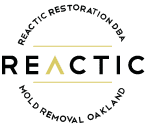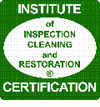Must-Know Symptoms of Black Mold Poisoning
Exposure to black mold can pave the way for menacing health concerns, period.
Before taking the leap and explaining the symptoms of black mold poisoning, aren’t you curious to learn what black molds are? While molds are much heard of, a black mold still spikes a doubt in the minds of many. Mold is a type of fungus, and ‘Black Mold’ refers to a bunch of different species of the mold. Why black? Well, molds, in general, are dark green or black in appearance. This pretty much explains the name ‘Black Mold.’
Molds are present almost everywhere, including the air. Whether it is your shower area, kitchen, or the basement, these fungus pop up everywhere. It also shows up on dirt and materials like paper and wood. However, molds thrive majorly in a humid climate. Therefore, if you are someone using a humidifier at home, there are chances that your crashing pad is already infected with fungus.
Are black molds toxigenic?
Black molds are known to cause serious health hazards, and it is because the fungus is toxic. Little were you aware, but black molds release toxins called mycotoxins that pose a grave threat to pre-existing health concerns. Bear in mind, molds need crawl space. They eat, grow, pair up with other spores, create colonies and amplify in numbers. The worst bit – molds double up in no time.
Being exposed to a higher concentration of mycotoxin can certainly impose health hazards. Respiratory issues, for instance. In a nutshell, it is safe to conclude that yes, black molds are highly toxigenic in nature.
What are the commonly observed symptoms of mold poisoning?
It is pretty easy to identify whether or not you are targeted with mold infections. Here are a few symptoms you must learn about.
– Trouble with respiration
– Blocked nose
– Itchy eyes
– Flu and cough
– Irritated skin
If you are pre-diagnosed with conditions like asthma or allergies, you are prone to suffer from severe other symptoms like:
– Baneful allergic reactions
– Frequent coughing
– Fever
– Breathlessness
– Exhaustion
– Sinusitis
– Headache
Symptoms that show up due to mold infection are not always prompt and on-the-spot. Some syndromes appear after a while. If you have been exposed to black molds for a long time now, you might be putting-up with not-so-immediate symptoms like:
– Numbness of limbs and hands
– Loss of hair
– Stomach ache
– Muscle cramps
– Anxiety
– Memory loss
– Chronic allergies
– Asthma
– Weak immune system
– Chronic obstructive pulmonary disorder
– Immunodeficiency
– Weight gain
Mold removal is of prior need. The symptoms mentioned above can be treated using allergy shots, nasal sprays, over-the-counter drugs, montelukast, and others. However, if your condition is severe, it is best to get yourself diagnosed at the earliest and start with a prescribed treatment module.
How to proceed with quick mold removal?
Black molds sprout sooner than you think. So, if you have spotted clustered black growths, it is a black mold alert. Get rid of objects that are yet to be infected by the molds. Installing air purifiers are a good option. It helps capture the fungus. If possible, cut-off and ward out dry walls caused due to mold damage. Use bleach or other effective fungicidal agents to cover the non-affected surfaces. Last but not least, to ensure absolute mold removal, it is best to seek professional service.










































